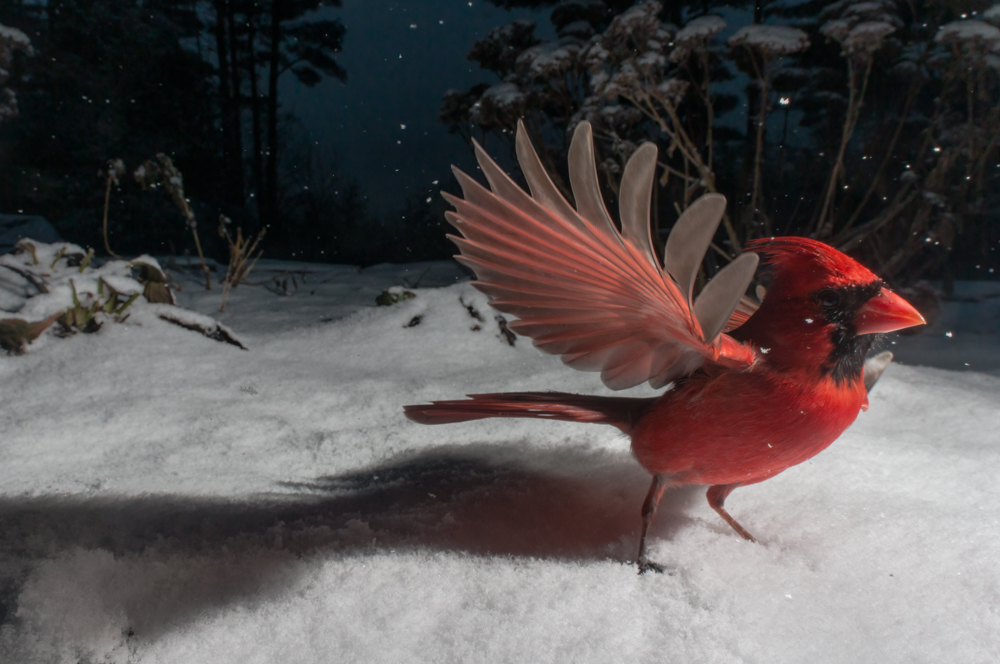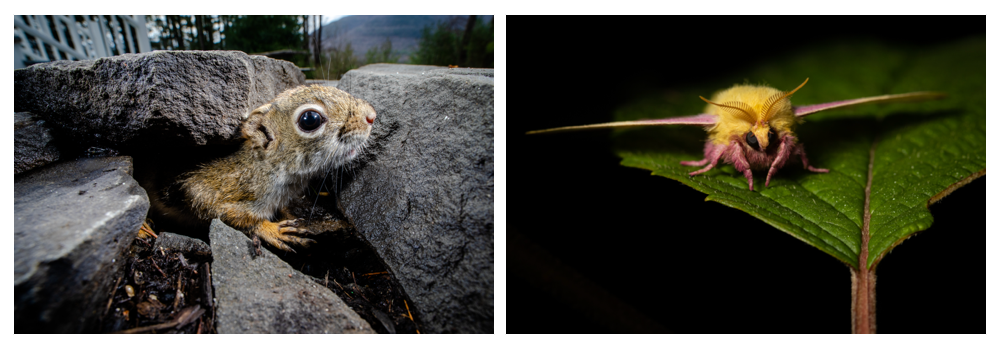By Jenny Zeller
In 2022, Bernheim expanded the Artist in Residence program to include an annual call for an Environmental Artist in Residence. This program encourages visual artists to examine environmental issues and the severity of the climate crisis to promote dialogue and positive change for the natural environment and world at large. Artists are invited to address environmental themes including (but not limited to) excess heat, drought, flooding, extreme weather events, food insecurity, displacement, environmental justice and the loss of biodiversity.

Bernheim is excited to announce that Wildlife Conservation Photographer Carla Rhodes is our inaugural Environmental Artist in Residence recipient!
Through the powerful medium of photography, Carla Rhodes connects viewers emotionally to our natural world and the wildlife who inhabit it. The artist is passionate about raising awareness for her subjects and gravitate towards the misunderstood and overlooked common species which are often woefully underappreciated. Rhodes’s goal is to tell engaging and impactful stories through the photographic art form that inspires viewers to respect and protect all things wild, which directly combats climate change.
Through traditional photography and the strategic placement of camera traps (remotely triggered cameras), Rhodes proposes to bring attention to the flora and fauna of the natural spaces of Bernheim, especially focusing on The Cedar Grove wildlife corridor, where the LG&E pipeline is slated to destroy pristine habitat.
“While holding myself to high ethical standards, my process of camera trapping will connect viewers to natural areas least accessible to the average visitor and reveal a hidden world within Bernheim. I will capture the overall beauty and ecological importance of Bernheim but also hone in on unique inhabitants, such as the globally imperiled bluff vertigo snails and threatened endemic Kentucky glade cress within The Cedar Grove wildlife corridor and other exciting ecological discoveries along the way!”

Rhodes’s self-produced coverage on Greater Adjutant storks from India and the women who are saving them has been featured in The New York Times, bioGraphic, National Wildlife Magazine, and more. Additional self-produced projects, including moths and the beauty of common backyard birds, entitled Beneath the Bird Feeder have been published via Smithsonian (online), The Guardian, and Audubon Magazine. In 2021 Rhodes was awarded the “Conservation Award” from Bird Photographer Of The Year, honored for her conservation work in Nature’s Best Photography International Awards and has been thrice featured on National Geographic’s social media outlets.

As a former Kentuckian now living in Woodstock, NY, Rhodes plans to visit Bernheim in several visits throughout the year for documenting the flora and fauna of Bernheim. We look forward to her work connecting people to the natural areas of Bernheim and helping us in the fight against the proposed LG&E pipeline.
Stay tuned for more information including ways to engage with the artist while in residence at Bernheim. In the meantime, check out this awesome video from The Verge, an online site that covers the intersection of technology, science, art, and culture. It’s a great insight into camera trapping featuring the work and process of Carla Rhodes!!
{“@context”:”http://schema.org/”,”@id”:”https://bernheim.org/2022-environmental-artist-in-residence-recipient-announcement/#arve-youtube-uxnjnin0du465fb478b69e41870749170″,”type”:”VideoObject”,”embedURL”:”https://www.youtube.com/embed/UXNjNIn0DU4?feature=oembed&iv_load_policy=3&modestbranding=1&rel=0&autohide=1&playsinline=0&autoplay=0″}



